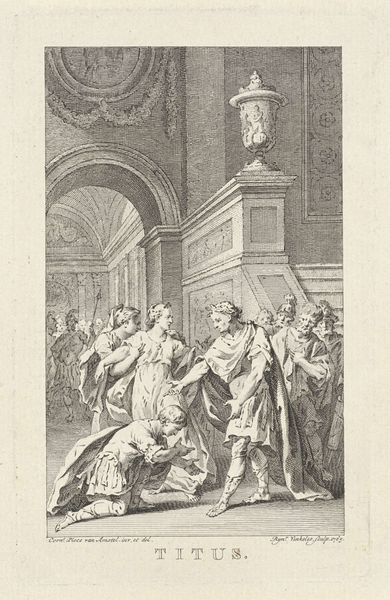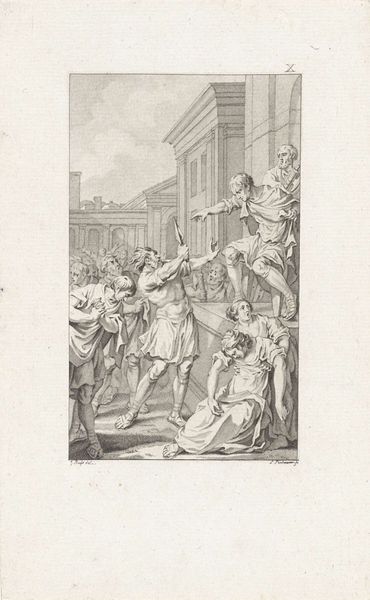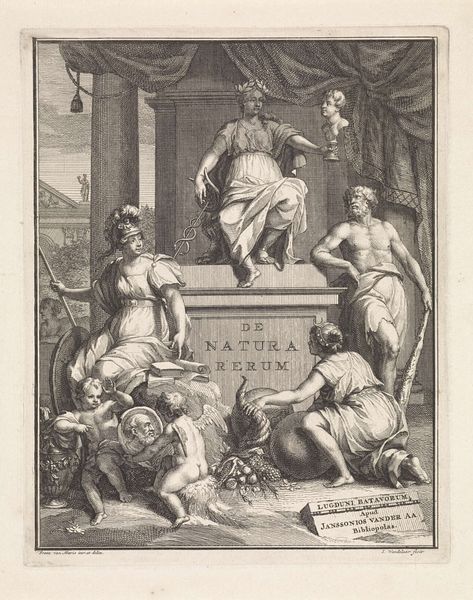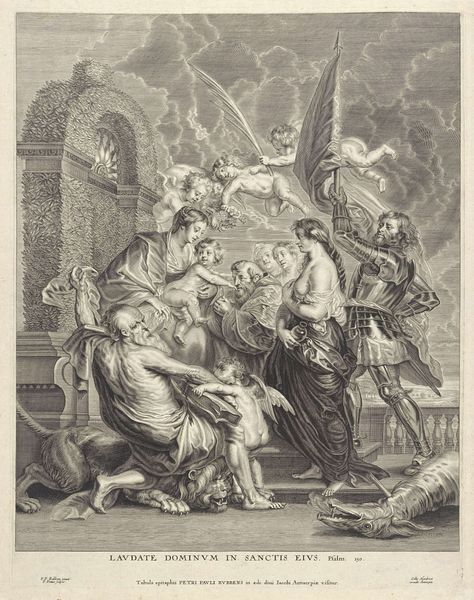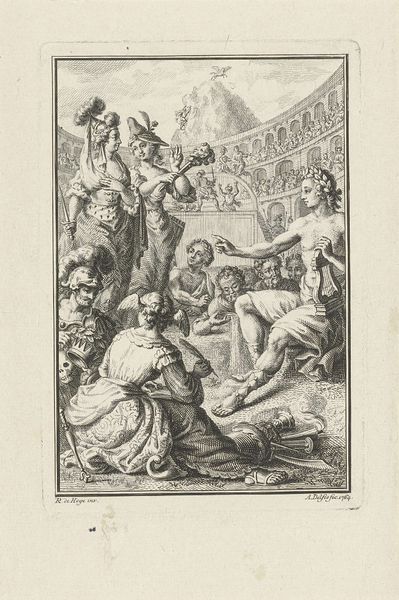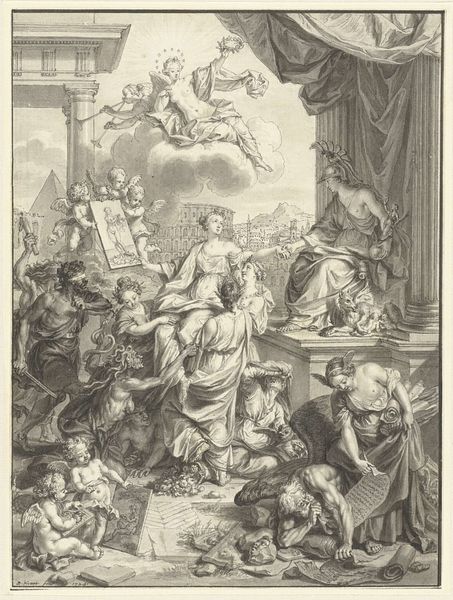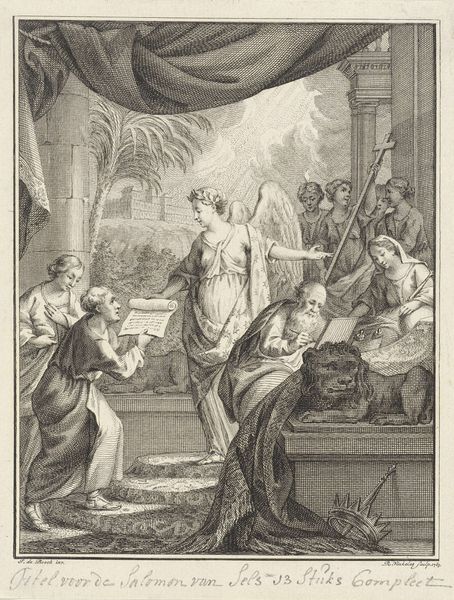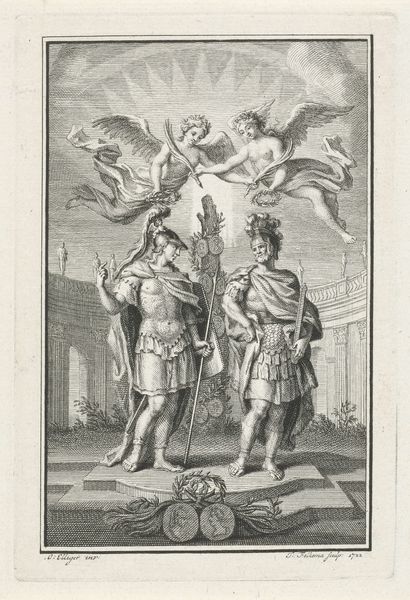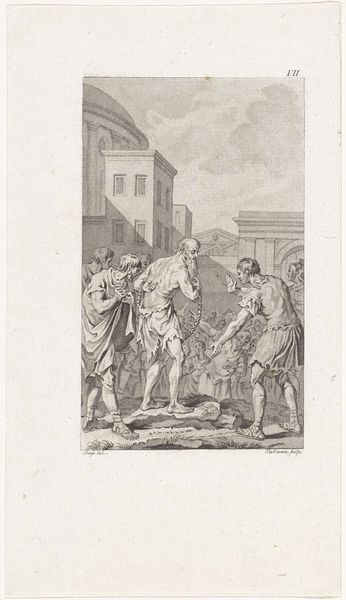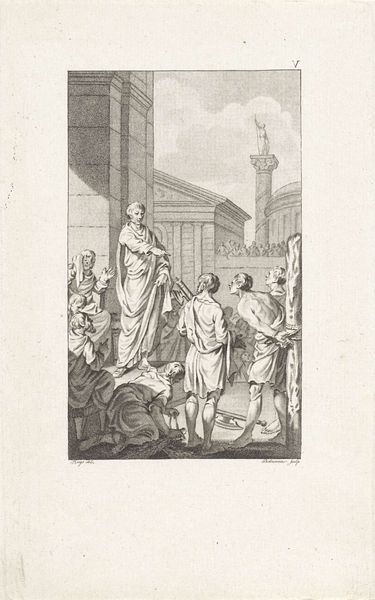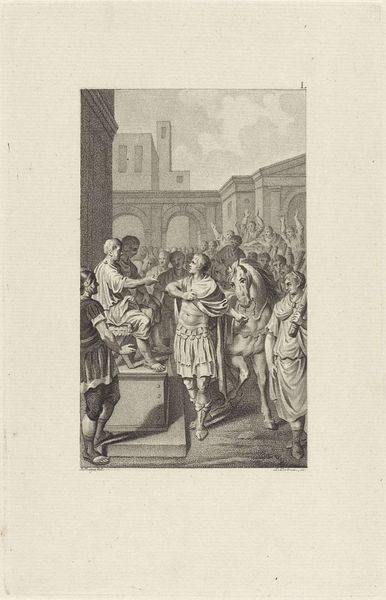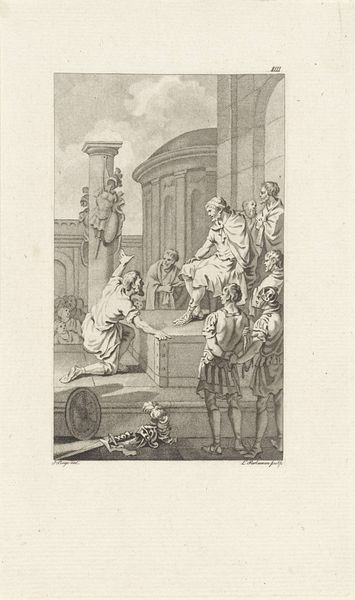
engraving
#
neoclacissism
#
narrative-art
#
old engraving style
#
classical-realism
#
figuration
#
form
#
old-timey
#
line
#
history-painting
#
academic-art
#
engraving
Dimensions: height 214 mm, width 134 mm
Copyright: Rijks Museum: Open Domain
Curator: Here we have Ludwig Gottlieb Portman's "The Rape of the Sabine Women", created in 1793. It's currently held in the Rijksmuseum collection, rendered meticulously in engraving. My immediate sense is of chaotic energy, all these swirling figures... and what’s with that tiny, slightly bewildered-looking dog? Editor: The dynamism you observe, that inherent drama, it's perfectly encapsulated within the neoclassical structure. The artist's use of line dictates form; each stroke carefully considered to guide the viewer's eye across the unfolding narrative. The clarity of line speaks to an academic approach, steeped in classical realism. Curator: See, to me it's more than just 'clarity'. I feel the sheer violence depicted! This is supposed to be high-minded history painting, right? But those Sabine women are genuinely struggling. I almost feel like averting my gaze, especially from that woman being dragged—a vortex of distress. Editor: Your empathetic reaction is understandable, and highlights a key tension. This artwork engages semiotically with a foundational myth. Observe the structural balance in the composition; the placement of the figures and architectural elements, creating a deliberate interplay between order and chaos, reflecting the dual nature of the Roman Empire's genesis. The scene isn't merely illustrating violence but encoding social and political themes of its time. Curator: Well, whatever Portman’s high-minded intentions were, I am left wrestling with the legacy. Is this some glorious moment? And honestly that dog just makes the whole thing seem utterly absurd to me. Editor: Portman uses line and form to invite discussion and deeper contemplation; the "Sabine women’s" emotional depth resonates powerfully with those core issues of societal foundations. Its enduring impact demonstrates formal qualities combined to transcend temporal limits. Curator: I’ll give you that. Though that tiny dog will continue to haunt my understanding. Editor: Precisely! And the engagement…perhaps that's the artwork’s intention to invite a visceral feeling?
Comments
No comments
Be the first to comment and join the conversation on the ultimate creative platform.
